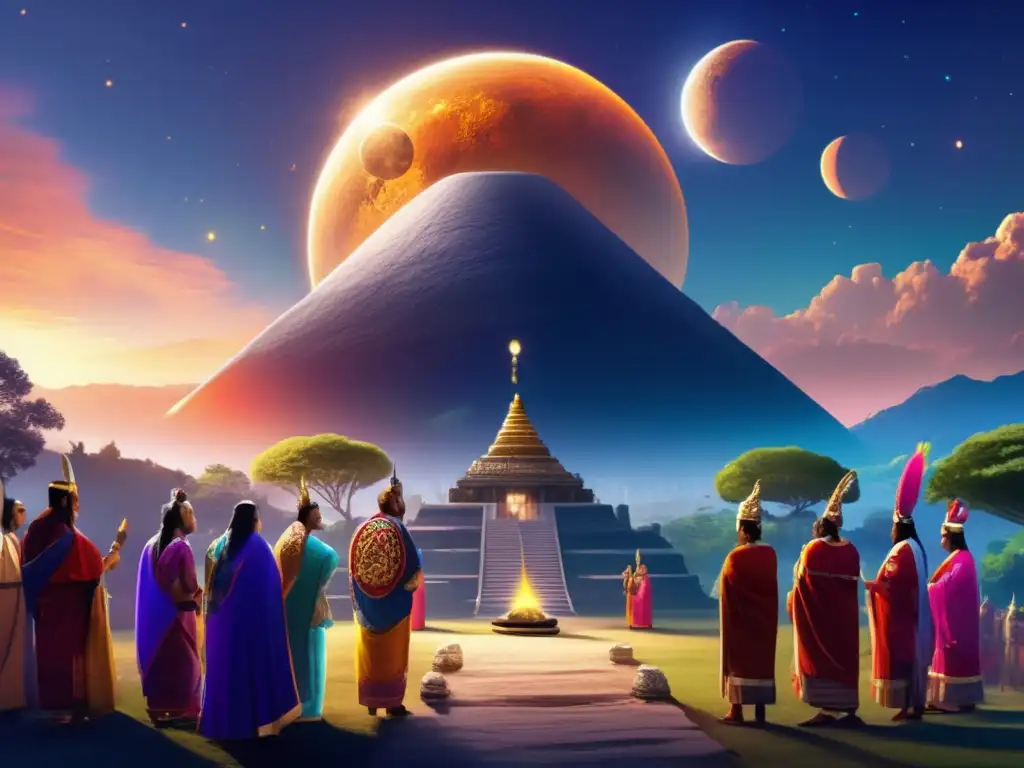The Role Of Asteroids In Ancient Cult Ceremonies

Introduction
Asteroids have been an integral part of human history and mythology since ancient times. They have been the subject of countless stories, legends, and beliefs among various cultures around the world. One of the most intriguing aspects of asteroid mythology is their role in ancient cult ceremonies. From the Maya to the Romans, many cultures incorporated asteroids into their rituals and religious practices. In this article, we will explore the different ways that asteroids were used in ancient cult ceremonies and their significance.
The Maya and Their Use of Asteroids in Religious Practices

The Popol Vuh
In the mythology of the ancient Maya, a text called the Popol Vuh chronicles the creation story of the world. According to the story, the gods created humans out of maize dough and then used stones from the sky to test their ability to worship and show gratitude. At one point in the story, the gods send down a giant asteroid that destroys everything in its path except for two men who survived by turning themselves into trees. This legend demonstrates the profound influence of asteroids on Mayan cosmology and religious beliefs.
The Maya Calendar
The Maya also developed a sophisticated calendar system that was based on the movements of celestial bodies, including asteroids. They believed that these celestial events dictated important events in their lives, such as agricultural cycles, religious ceremonies, and wars. The Maya had a special reverence for the asteroid Juno, which they associated with fertility, abundance, and protection. They often depicted Juno on their pottery and other art forms, and it was also used in their religious iconography.
The Role of Asteroids in Roman Religion

The Vestal Virgins
The ancient Romans had a complex pantheon of gods and goddesses, many of which were associated with celestial bodies, including asteroids. The Vestal Virgins were among the most important religious figures in ancient Rome, and their role was to maintain the sacred fire that symbolized Rome's continuity and purity. Asteroids played a crucial role in their religious practices, as the Vestal Virgins used special mirrors to observe the movements of celestial bodies, including asteroids. They believed that these observations helped them to predict the future and establish the auspicious times for important events.
The Festival of Flora
The Romans also celebrated a festival called the Floralia, which was dedicated to the goddess Flora. This festival took place in late April and early May and was associated with the arrival of spring and the blossoming of flowers. The Romans believed that the arrival of the asteroid Ceres, which was associated with agriculture and fertility, signaled the start of this festival. During the Floralia, people wore bright colors, danced, and participated in various other celebrations to honor Flora and Ceres and ensure a good harvest.
The Significance of Asteroids in Celtic Religion

The Festival of Lughnasadh
The Celts were another ancient culture that incorporated asteroids into their religious practices. The festival of Lughnasadh was celebrated by the Celts in August and was associated with the harvest and the god Lugh. The arrival of the asteroid Vesta, which was associated with harvest and abundance, signaled the start of this festival. During Lughnasadh, people would offer sacrifices and participate in various celebrations to honor Lugh and ensure a bountiful harvest.
The Sacred Stones of Tara
The Celts also believed that certain stones had special powers and were imbued with spiritual energy. These sacred stones were often associated with celestial bodies, including asteroids. At the Hill of Tara in Ireland, for example, a group of standing stones was believed to be aligned with the movements of the asteroid Juno. These stones were considered to be sacred and were used in various religious rituals and ceremonies.
Frequently Asked Questions

-
Did ancient cultures believe that asteroids had supernatural powers?
Yes, many ancient cultures believed that asteroids had supernatural powers and could influence human affairs, particularly in matters of fertility, abundance, and protection.
-
Did the Maya use asteroids in their calendar system?
Yes, the Maya developed a calendar system that was based on the movements of celestial bodies, including asteroids. They believed that these celestial events dictated important events in their lives, such as agricultural cycles, religious ceremonies, and wars.
-
What was the significance of Ceres in Roman religion?
Ceres was associated with agriculture and fertility in Roman religion. The arrival of this asteroid signaled the start of the Floralia festival, which was celebrated to ensure a good harvest.
-
What were the Vestal Virgins in ancient Rome?
The Vestal Virgins were among the most important religious figures in ancient Rome, and their role was to maintain the sacred fire that symbolized Rome's continuity and purity. Asteroids played a crucial role in their religious practices, as they used special mirrors to observe the movements of celestial bodies.
-
What was the festival of Lughnasadh in Celtic religion?
The festival of Lughnasadh was celebrated by the Celts in August and was associated with the harvest and the god Lugh. The arrival of the asteroid Vesta signaled the start of this festival.
Conclusion
Asteroids have played a significant role in human history, mythology, and religion. This article has explored the different ways that ancient cultures incorporated asteroids into their religious practices and the significance of these celestial bodies in their cosmologies. Whether it was the Maya's reverence for Juno, the Romans' use of mirrors to observe asteroid movements, or the Celts' association of sacred stones with celestial bodies, asteroids have left an indelible mark on human culture and spirituality. We hope that this article has provided some insight into the fascinating world of asteroids and their role in ancient cult ceremonies.
Thank you for taking the time to read this article. We encourage you to share your thoughts in the comments section and to positively interact with www.asteroidrealm.com. Join us in exploring the mysteries of the universe and the fascinating world of asteroids!
Additional Resources

 Asteroids In The Sufi Tradition: An Analysis
Asteroids In The Sufi Tradition: An Analysis Myths Of Cosmic Disasters: The Impact Of Asteroids
Myths Of Cosmic Disasters: The Impact Of Asteroids Heavenly Rocks In Ethiopian Legends: A Study
Heavenly Rocks In Ethiopian Legends: A StudyIf you want to discover more articles similar to The Role Of Asteroids In Ancient Cult Ceremonies, you can visit the Asteroid Mythology category.
Leave a Reply

Articulos relacionados: